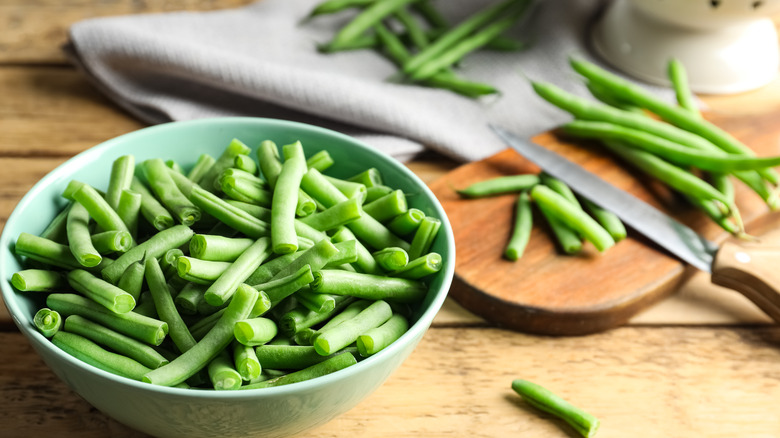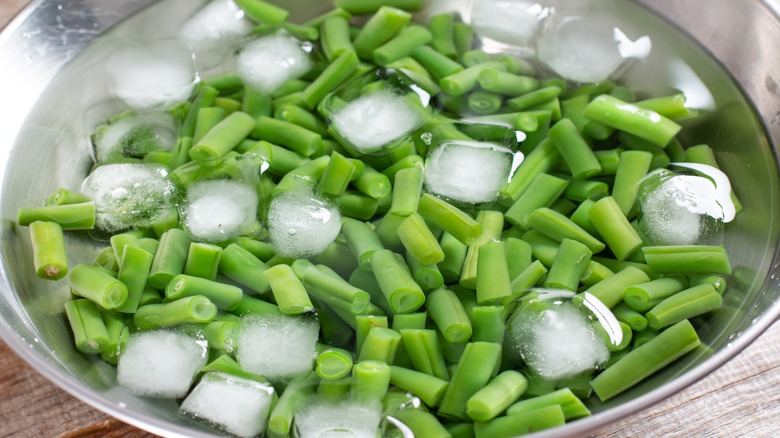The Step You Cannot Forget When Freezing Fresh Green Beans
Whether freezing leftover food or sending fresh future-use items to the frosty box, the process helps reduce food waste and save valuable time. Shout out to General Electric for bringing modern electric freezers into mass production in 1927, replacing the rudimentary wooden-crate ice box contraptions, as Denmanair explains. As a result, many foods, including vegetables, now enjoy an extended lifespan when stored in typical freezer temps of 0°F, per Whirlpool, making edible summer goodness last far into autumn and winter.
Fresh green beans, in particular, so abundant in summer and losing peak quality by October, are sorely missed in pod-prone recipes once cooler weather prevails. Yet, AgHires reveals that green beans are the third most popular vegetable grown in America's home gardens, trailing only peppers and tomatoes. And there's good reason to pine for them. When raw and fresh, the long green wonders contain no cholesterol, low sodium levels, only 31 calories per cup, healthy amounts of folate, vitamins C and A, and essential minerals such as manganese for antioxidants, metabolism support, and much more, according to Healthline.
Fortunately, there's a way to keep green beans snappy and nutrient-rich until balmier weather returns. The freezer serves as a frigid hibernation chamber, but things are a bit more complex than tossing your string, haricot vert, wax, or snap beans straight into a freezer bag. Nevertheless, there's a crucial step to remember, and it's an easy one.
Blanch, dunk, and freeze
So, it's time to prep your green bean abundance for its icy slumber (they can last up to eight months in the freezer if properly prepared, notes Cookaholic Wife). It all starts with choosing the freshest beans, preferably soon after they're picked. Next, trim both edges and rinse the beans thoroughly in cool running water, removing all dirt and stray strings, per Better Homes & Gardens. Then comes the most important part, the step you simply cannot skip: blanching the beans.
Blanching is a food-industry term that's actually quite simple to enact. Bring a large pot of water to a rolling boil, using roughly 1 gallon per pound of fresh green beans; add the fresh pods and let them boil for two to four minutes, depending on their thickness. Immediately dunk them in an icy cold water bath, which stops the cooking process. Next, thoroughly drain the water from the cooled beans, transport them into freezer-friendly bags or jars, and remember to apply labels to keep track of freshness and quantity.
Blanching green beans halts the enzymes that affect color, crunchy texture, and flavor, helping retain that summer-fresh goodness we all love in our veggie recipes, explains Good Housekeeping. When it's time to bring them out of hibernation and back onto your dinner plates, Healthline recommends cooking them quickly in a small amount of water — because certain nutrients in frozen green beans, including vitamin C, can lose potency during the thawing process.

